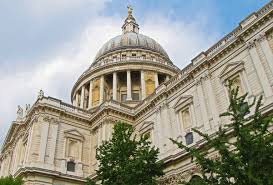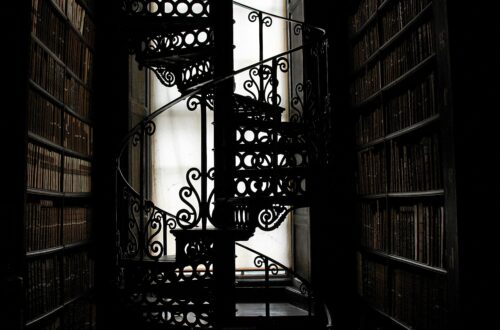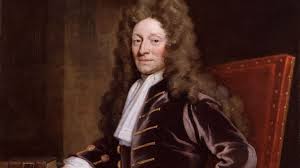
Sir Christopher Wren (1632 – 1723) is one of the most celebrated architects in British history, best known for transforming London’s skyline after the Great Fire of 1666. His pioneering designs and visionary approach to architecture helped define the English Baroque style and shaped the city’s identity for centuries to come. Wren’s most famous work, St. Paul’s Cathedral, remains an enduring symbol of British architecture, but his influence extends far beyond this iconic structure.
Come with me as we take a deep dive into the life, works, and lasting legacy of Christopher Wren.
The Early Life of Christopher Wren
Christopher Wren was born on October 20, 1632, in Wiltshire, England. His father was a royal chaplain, and his family’s connections gave him access to the elite academic circles of the time. Wren initially pursued mathematics and science, excelling in astronomy and physics. His early career was focused on scientific research, and he became a professor of astronomy at Oxford University in 1661.
Wren’s interest in architecture grew gradually, influenced by his fascination with engineering and design. His scientific background deeply informed his architectural style, blending aesthetics with practicality and mathematical precision.
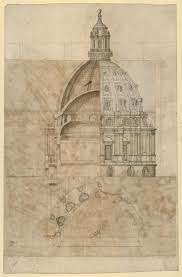
The Great Fire of London and Wren’s Rise to Fame
Wren’s architectural career took a dramatic turn after the Great Fire of London in 1666. The fire devastated much of the city, destroying over 13,000 buildings, including St. Paul’s Cathedral and many parish churches. The need to rebuild the city presented an unprecedented opportunity for Wren to leave his mark.
The Rebuilding of London
As part of the rebuilding effort, Wren submitted a grand plan for redesigning the entire city, but it was deemed too ambitious to execute. Nevertheless, he was appointed Surveyor of the King’s Works, giving him significant control over the city’s reconstruction.
Wren’s most notable projects in the rebuilding of London include:
▪️The Monument to the Great Fire of London
▪️Over 50 parish churches, including St. Mary-le-Bow, St. Bride’s Church, and St. Stephen Walbrook.
St. Paul’s Cathedral: Wren’s Masterpiece
St. Paul’s Cathedral is undoubtedly Wren’s most famous and enduring work. Completed in 1710 after 35 years of construction, it stands as a triumph of English Baroque architecture. The cathedral’s iconic dome dominates London’s skyline and has become a symbol of resilience and national pride.
Key Features of St. Paul’s Cathedral:
▪️The Dome: Inspired by St. Peter’s Basilica in Rome, Wren’s dome is an architectural marvel. It stands 365 feet tall and remains one of the largest domes in the world.
▪️The Whispering Gallery: A circular gallery inside the dome known for its unique acoustics, allowing whispers to travel along the curved walls.
▪️The Facade: The west front features a double-layered portico and two bell towers, blending classical and Baroque elements.
▪️Mathematical Precision: Wren’s scientific background is evident in the cathedral’s perfect proportions and structural innovations.
St. Paul’s survived the Blitz during World War II, solidifying its status as a symbol of endurance and hope.
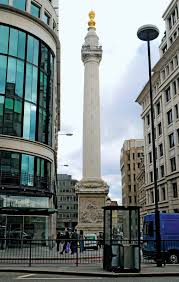
Wren’s Other Notable Works
1. The Monument to the Great Fire of London (1677)
A 202-foot-tall column commemorating the Great Fire, with an observation deck offering panoramic views of the city.
2. Hampton Court Palace Renovations (1689 – 1694)
Wren added a Baroque-style expansion to the palace for King William III and Queen Mary II, blending it with the existing Tudor architecture.
3. Royal Naval College, Greenwich (1696 – 1712)
Designed in collaboration with other architects, the complex is a masterpiece of English Baroque, now part of a UNESCO World Heritage Site.
4. Kensington Palace Renovations (1689 – 1696)
Wren played a key role in transforming the modest mansion into a royal residence.
Wren’s Architectural Style and Philosophy
Wren’s style is often described as a blend of classical elements with Baroque grandeur, emphasizing harmony, symmetry, and proportion. His designs were influenced by Renaissance architecture, particularly the works of Andrea Palladio and Gian Lorenzo Bernini, but he adapted these styles to suit the English context.
Key Characteristics of Wren’s Architecture

▪️Mathematical Precision: Wren’s scientific training ensured that his designs were not only beautiful but also structurally sound.
▪️Classical Influence: Columns, domes, and pediments feature prominently in his works.
▪️Baroque Ornamentation: His later designs showcase more elaborate detailing and dramatic contrasts of light and shadow.
▪️Functional Spaces: Wren prioritized functionality, creating spaces that served both aesthetic and practical purposes.
The Legacy of Christopher Wren
Wren’s contributions to architecture are immeasurable. He reshaped London’s skyline, introduced a new architectural style to England, and set a standard for public buildings that would influence generations of architects. His designs bridge the gap between classical and modern architecture, combining ancient principles with innovative techniques.
Wren was buried in St. Paul’s Cathedral, and his tomb bears a simple but fitting epitaph:
Si monumentum requiris, circumspice.
(If you seek his monument, look around you.)
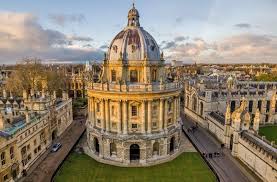
Conclusion
Christopher Wren’s genius lay in his ability to merge science, art, and architecture into harmonious and timeless works. His influence can still be seen in the buildings of modern London, and his legacy endures as one of the most important figures in architectural history. Whether gazing up at the dome of St. Paul’s or walking through the streets of the rebuilt city, Londoners and visitors alike continue to experience Wren’s vision and brilliance.
If you’re inspired by Wren’s architectural mastery, consider visiting some of his most famous works in London or delve deeper into the history of English Baroque architecture!
Thanks for reading! Please leave a comment. To read more, please head to the main page.
For my short stories, visit my story blog
